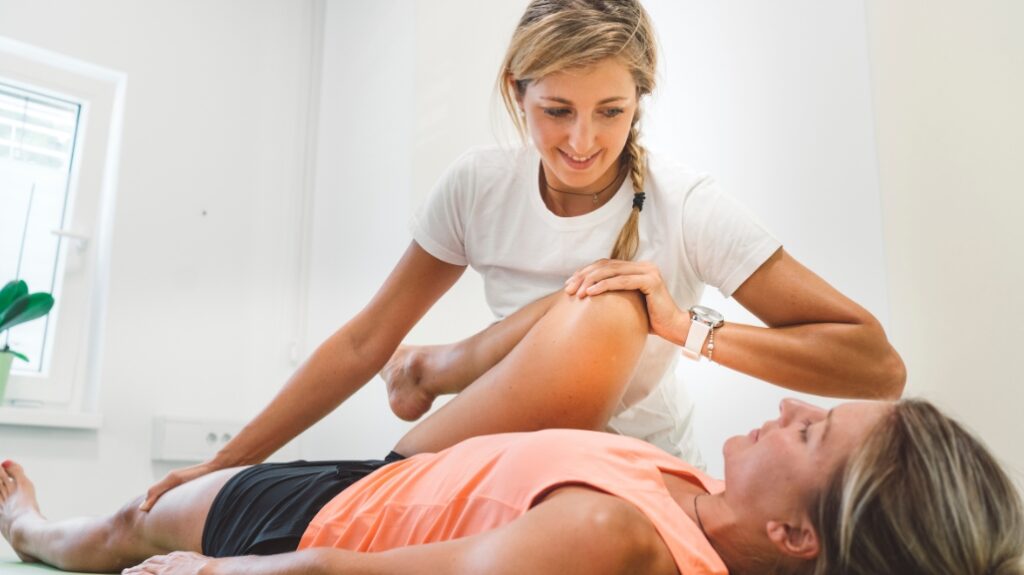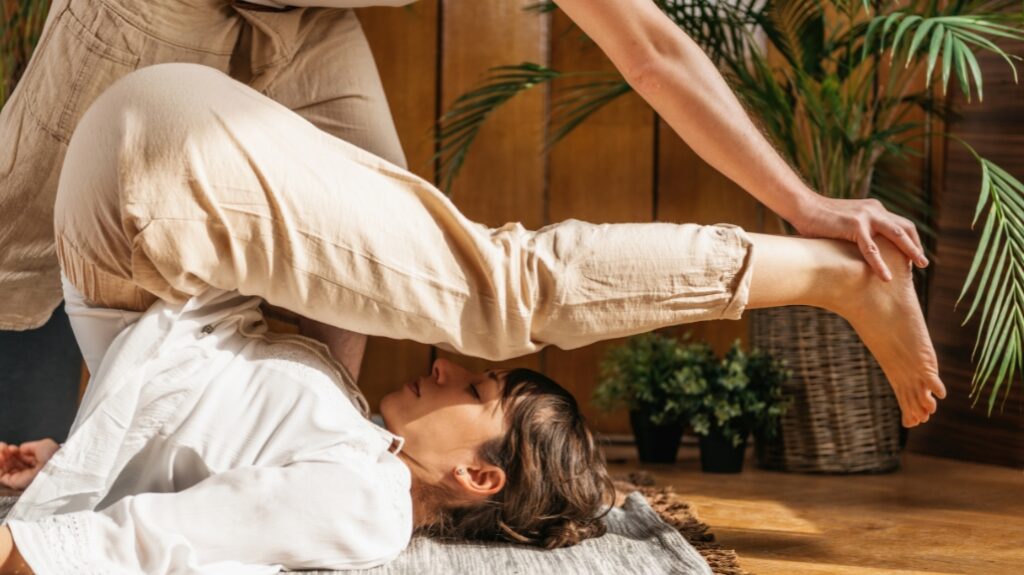Passive stretching in Brunswick, Middlesex County, NJ, is growing more popular every year. More people want better flexibility, muscle relief, and relief in daily movement. Many stretch on their own, but not everyone knows how to stretch safely. This matters because the wrong technique can hold you back or even cause harm. Passive stretching happens when someone or something else does the work for you.
Your body relaxes, and the stretch goes deeper. Many people who visit clinics or studios for muscle pain or movement issues experience this kind of stretch. Knowing how to do passive stretching the right way helps you stay safe, feel better, and get more from each session. Professional services like Stretch 4 Me often make this safe and easy, so you can focus on your health and comfort.
Table of Contents
ToggleWhat Is Passive Stretching?

Passive stretching in Brunswick means someone or something else helps you stretch. Your job is to relax and let your body be moved. This is different from active stretching, where you use your own muscles to hold a pose. A trainer, friend, or even a strap can move your arm or leg and keep it still while you let go and rest.
For instance, if you lie on your back and a trainer in Brunswick gently pushes your leg toward your head, you are doing a passive stretch. This is the kind of deep, relaxing work found in many studios. People who want good results without extra effort often choose this kind of stretch. For local help, see Passive Stretching Services in Middlesex.
How Passive Stretching Works
When you do passive stretching, you stay as relaxed as possible. Someone else moves your arm or leg until you feel a gentle pull. Your soft tissues, like muscles, ligaments, and tendons, get a slow, steady stretch. Because you are not tensing up or fighting the stretch, your body can go further and hold longer. Stretches usually last 15 to 60 seconds. Breathing slowly and deeply helps your body relax even more.
Passive vs. Active Stretching
Also Read: What is full-body stretching and how professionals help
Benefits of Passive Stretching
- Helps muscles feel less tight.
- Increases how far you can move your joints.
- It may reduce pain after workouts or long days.
- Helps you relax, both in body and mind.
- It can help improve blood flow and recovery.
- Relieves stress and makes you feel calm.
How To Do Passive Stretching Safely and Effectively

Essential Techniques and Tips
- Keep your body loose and relaxed.
- Breathe slowly and steadily.
- Hold each stretch for at least 15 seconds, but not more than 60 seconds.
- Stop if it hurts or feels wrong.
- Use props like a strap, a towel, or a partner for help.
- Make sure your joints are not forced or bent too far.
- Stretch both sides of your body for balance.
Common Mistakes and How to Avoid Them
- Forcing a joint or muscle past a gentle stretch. This can hurt you.
- Holding your breath. Always breathe out slowly.
- Not warming up. Cold muscles are easier to strain.
- Bouncing or jerking to go deeper. This may pull or tear soft tissue.
- Doing too much, too fast.
When to Seek Professional Help
Sometimes, stretching alone is not enough. A professional knows just how much pressure to use and when to stop. They help people who have injuries, tight spots, or want to stretch safely. Trained experts at Stretch 4 Me in Brunswick, Middlesex County, keep you in safe positions, check your comfort, and teach you new moves you can do at home.
If you are recovering from injury, struggle to get deep stretches alone, or want faster progress, try assisted stretching. Professionals can make your sessions safe, effective, and even relaxing. Support from experts makes a big impact on both comfort and results.
The Bottom Line
Passive stretching is a gentle and powerful way to help your muscles, joints, and mind. With the right technique, passive stretching can increase your flexibility, reduce muscle pain, and bring much-needed relaxation. Safe stretching helps protect your body and supports good health for years to come. Think about what you want from your stretches—less pain, more movement, or daily comfort? Try passive stretching in your routine, and ask for help from local pros if you want the best results. With their support, you can reach your goals faster and feel better every day.
